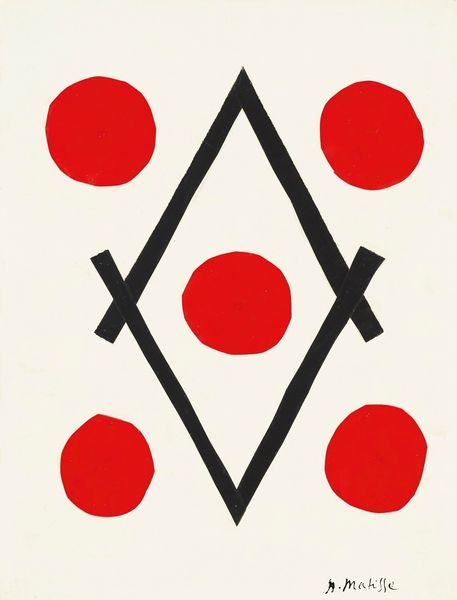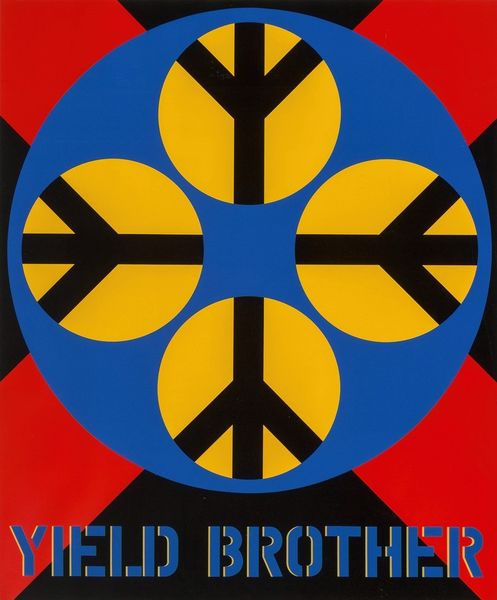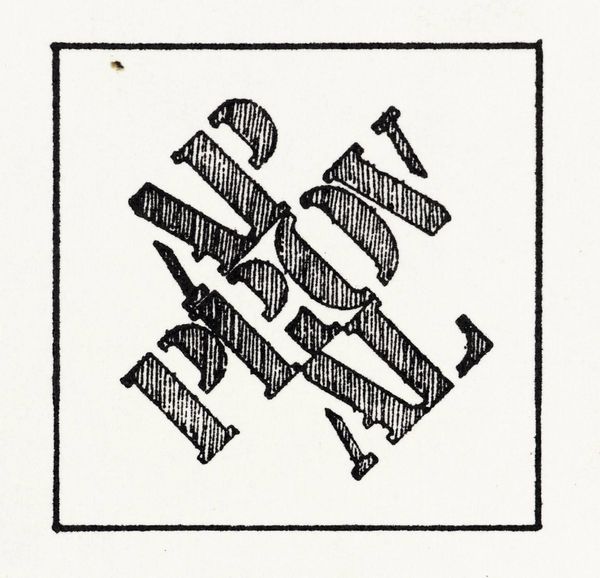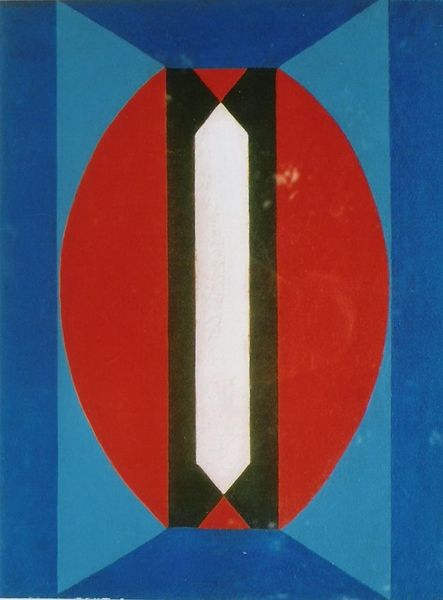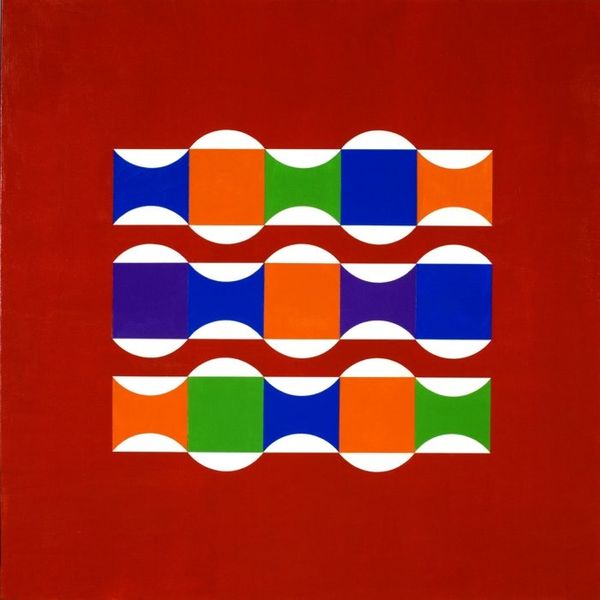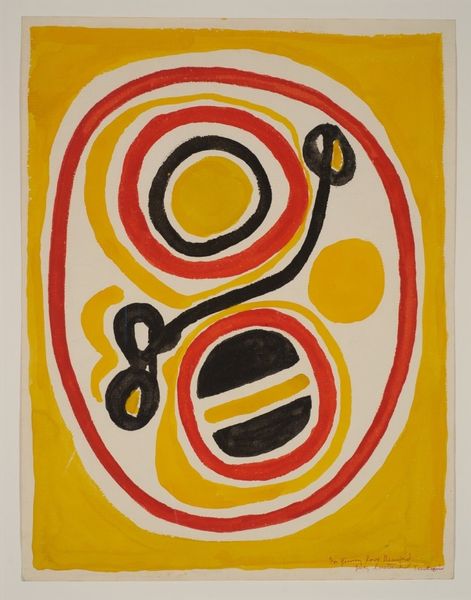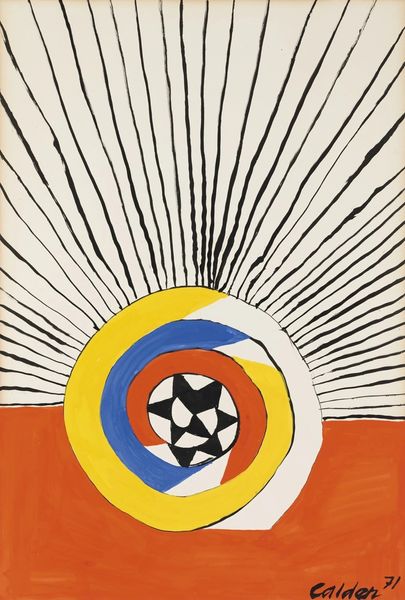
painting, enamel
#
popart
#
painting
#
pop art
#
geometric
#
enamel
#
pop-art
#
modernism
Copyright: Modern Artists: Artvee
Editor: Here we have Robert Indiana's "Homage to Hemingway," created in 1961, using enamel on masonite. The geometric composition and the bold text are striking. What I find most interesting is the title – Homage to Hemingway– coupled with the word “apav,” creating an unexpected sense of… code, or a puzzle, something obscure. What do you see in this piece? Curator: It’s impossible to separate this piece from its historical context. The early 60s were a time of great social and political upheaval in America, but also of great artistic innovation. Robert Indiana was deeply embedded in the Pop Art movement, which critiqued consumer culture, celebrity, and even the language used in mass media. Indiana also explored language’s use in everyday life as both art and a symbol. How does Hemingway’s life and death influence the artist’s construction of ‘the hero?' The title acts as an immediate indication of Pop Art’s ability to turn anyone into celebrity, questioning Hemingway's ‘larger-than-life’ status. Editor: That’s fascinating. So you see the “APAV” as a commentary on fame, perhaps? Was this celebrity a positive or negative trait? Curator: Absolutely. Looking closely at this geometric construction and its almost robotic feel, and by considering Indiana’s queer identity during a period of widespread homophobia, could this be Indiana critiquing an obsession with archetypes and labels during the civil rights movements and second-wave feminism? Editor: That's a completely different angle than what I initially perceived. I see how the personal and political landscapes are completely enmeshed here. Curator: Right. Art is always in conversation with its time. Thinking about identity, social constructs, and historical narratives helps unlock a piece's complexity. Editor: I’ll definitely be looking at art differently now, considering how much history and social context influence our interpretation. Thank you.
Comments
No comments
Be the first to comment and join the conversation on the ultimate creative platform.

